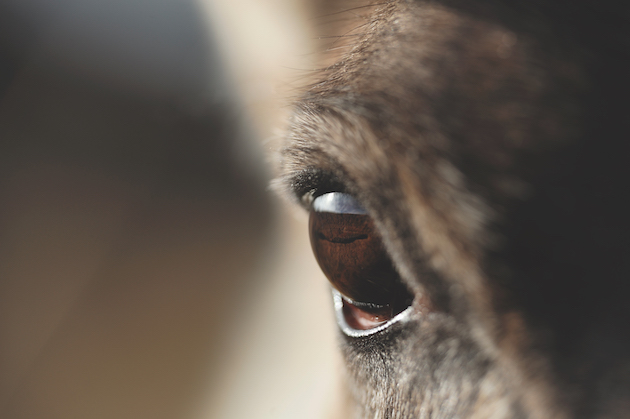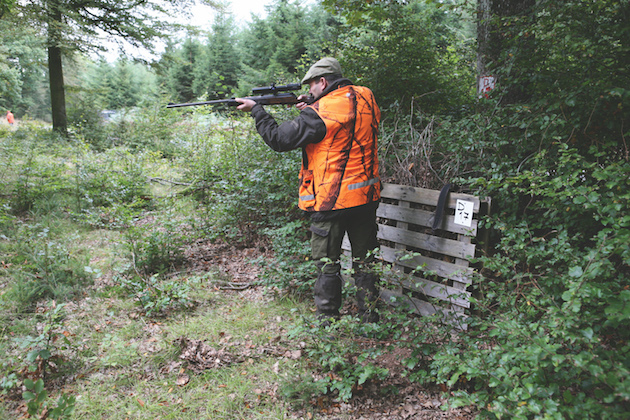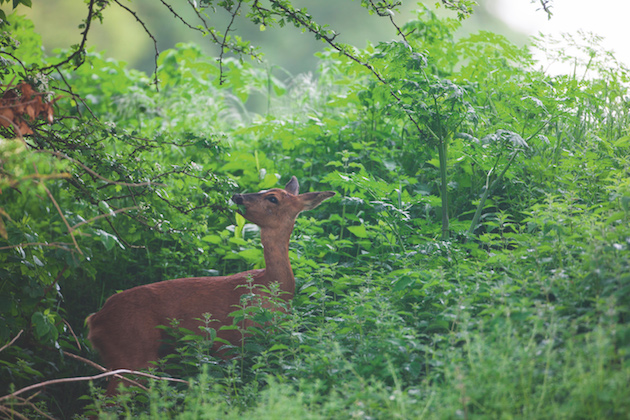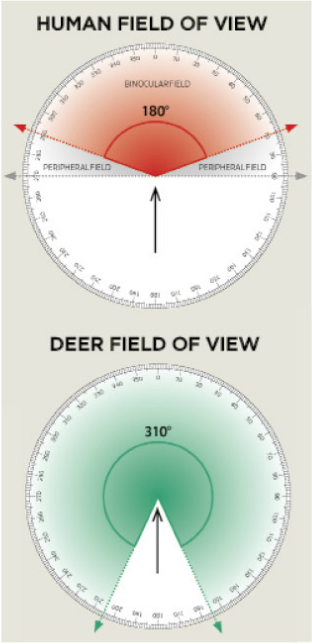Win CENS ProFlex DX5 earplugs worth £1,149 – enter here
Keeping an eye on you

Frost still clung to the grey carpet of oak leaves that clothed the forest floor. My breath hung around me in wreaths and you could cut the silence with a knife. I had been waiting on my stand in northern Alsace for perhaps an hour when I heard the doe, her delicate footfalls betrayed by the faint whisper of frosted leaves, which she kicked up as she headed straight towards me.
To human eyes I was lit up like a lighthouse. My regulation blaze camouflage gilet and bright-orange cap stood out like a beacon against those sombre winter oaks, but on she trotted, clearly more concerned about the beating line behind her than the fluorescent apparition now no more than 40 yards in front. Until, that is, I lifted my rifle. At that moment she turned through 90° and ran for dear life. But it was too late: my bullet struck her in the chest and she lurched forward a dozen yards before falling to the ground.
How well do deer see?
We British stalkers who sport the latest camouflage patterns often find it strange that our European friends, who for safety reasons wear blaze orange when hunting driven deer or wild boar, don’t spook more deer than they shoot. The answer lies in the fact that a deer’s eyes have evolved to work best with short-wavelength light. This means they can see blues, greens and UV light far better than they can perceive red and orange. While the science that confirmed this was conducted in the US on white-tailed deer, the principle seems to hold good for our European species, too. So while my blaze orange clothing ensured that I could be seen by my neighbouring Rifles, it did not alert the roe to my presence until I moved.
Looking for the best camouflage jackets? Just click here.
Movement, of course, is the crucial factor. I have lost count of the times that deer have quite obviously clocked me while I am out in the woods but have reacted more with curiosity than with terror.
Provided that I remain motionless for long enough, they often revert to browsing or grazing, allowing me either to bring my rifle to bear or, if they are not on the day’s menu, to slip away and avoid their alerting others of their kind to the threat posed by a prowling hunter.

European hunters wear blaze orange in woods for safety reasons
Of course, it is best, if you are a hunter, not to let your quarry see you in the first place, and in this respect some animal species have an obvious height advantage over others. It was a masterstroke in human evolution when we learned to walk on our hind legs, because suddenly we could see much more and much further. In a countryside clothed in grass, bushes and trees, the field of vision of a short creature is less than that of a tall one. I often feel sorry for Teal, my Labrador, when she is stalking alongside me but cannot spot the deer I am looking at because she can’t see over vegetation.
Thus larger species like red and fallow, the eyes of which are mounted on a higher vantage point, have a wider view of their surroundings than smaller ones like muntjac.
It’s not only the height of an animal that offers it advantage, but also the number of eyes it can bring to bear upon its surroundings. By which I mean that a group or herd of deer is usually going to be harder to approach than a single animal. Fallow are the masters here. Their herding instinct ensures that instead of two eyes watching out for danger there may be a dozen, 20, 50 or more, each pair ready in turn to guard the other animals in the herd while they rest or feed. Spotting a herd of fallow in heavy timber then approaching them unseen to within shot is a significant achievement for any woodland stalker.
Lone deer are much easier to approach. Though they have better all-round vision than us — their eyes being positioned on the sides of their heads instead of at the front like those of most predators — they cannot look out of the back of their heads. If you wait long enough for a deer to turn its head away from you, then it cannot see you. That is the time to make your move — whether to raise your rifle on to the sticks or slip away unseen.
The trick is in watching it sufficiently closely to know when it is relaxed and unconcerned. The signs of a relaxed deer are when, instead of nervously jerking its head up and looking in your direction every few seconds, it gets stuck into feeding itself. When it does lift its head to check its surroundings, it is looking towards other points of the compass and not only towards you.

A lone deer is much easier to approach than a herd with many watchful pairs of eyes
Tree cover
Likewise, a deer cannot see you when there is something in the way. So if you pick up a deer that is moving through woodland, wait until its head is behind a tree before lifting your rifle, pick a clear gap in its path and take your shot when it steps into the gap.
In general, the vision of predators tends to be much better than that of prey species. Deer do not need to check out whether it is a male or female wolf, nor the detail of its coat. They just need to know that it’s a wolf. The predator, on the other hand, needs to be able both to spot its prey at long distance and then to pick out the young or weak animal that it can kill more easily. When our own vision is amplified by the use of good binoculars, it is certainly better than that of most deer. When thermal imaging is thrown into the equation, then a fully equipped deerstalker has the ability to see far more than his quarry ever can.
Camouflage definitely helps. I recall one morning’s roe stalking at the back end of February when a young buck stepped out of a hedgerow 50 yards in front of me as I was stalking two does along a field margin. I froze. He turned briefly and, as he did so, I dropped quietly into the ditch beside me.
The buck looked towards me inquisitively. Tonally, the washed-out greys and browns of my jacket and trousers were a perfect match for the bleached grass and dead bramble of that winter hedgerow, while the white of my face was masked by my head net. Crucially, however, I didn’t so much as twitch an eyelid as the buck moved slowly towards me, curiosity written all over his face.
I knew that if he ran or barked, I would lose my chance at the does, but he did not. Instead he walked up to about 15 yards from me, staring intently for what seemed like an eternity but was probably no more than five or six minutes. Then he turned and walked off. I got my doe.
Detecting movement
Back in that French forest, it was movement that alerted the roe doe to my presence. A deer may not be able to focus as well as we can but it will always detect movement, so it is movement that deer will react to rather than shape or colour.
Assuming that you are respecting the wind direction and not allowing a deer to catch your scent, then if you remain absolutely motionless, it will often either not see you at all or at least not recognise you as a threat. But when it comes to an eyeballing competition between deer and deer stalker, it is the one who breaks first that is usually going to lose.
And to win a competition like that requires patience, which is something deer have in shedloads because their lives depend upon it. Patience, in contrast, is a commodity that is sometimes in short supply among humans.
Related Articles
Get the latest news delivered direct to your door
Subscribe to Shooting Times & Country
Discover the ultimate companion for field sports enthusiasts with Shooting Times & Country Magazine, the UK’s leading weekly publication that has been at the forefront of shooting culture since 1882. Subscribers gain access to expert tips, comprehensive gear reviews, seasonal advice and a vibrant community of like-minded shooters.
Save on shop price when you subscribe with weekly issues featuring in-depth articles on gundog training, exclusive member offers and access to the digital back issue library. A Shooting Times & Country subscription is more than a magazine, don’t just read about the countryside; immerse yourself in its most authoritative and engaging publication.








